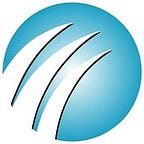Global Accessibility Awareness Day 16 May, 2024
More reach, more engagement, more clients: level up your communication
The best-written marketing collateral in the game is useless if the customer can’t read it.
When it’s not just one customer but nearly half the adult population, that’s a massive investment down the drain. It’s also a legal risk, if clients can’t understand your terms and conditions, contracts and policies.
Global Accessibility Awareness Day on May 16 is a time to think about how we get our message across — including how we reach the 44 per cent of adult Australians who live with low literacy.
Low literacy can affect anybody. You may be highly literate today, but tomorrow a stroke, car accident or sporting injury could see you join the 44 per cent.
Cathy Basterfield is a speech pathologist and the pioneer behind writing nearly anyone can read: Easy English. The system is based on decades of clinical research and user testing to make it as accessible as possible, even for adults who can only read at a grade one level.
“Easy English gets straight to the point,” Ms Basterfield says. “It gives the reader the information they need to make an informed choice, and expresses it in the simplest possible way.
“It’s an opportunity to make a visible commitment to accessibility, and to ensure consumer information is available to all potential clients, including older people, people from non-English speaking backgrounds, and people with disability.
“Every single thing about Easy English is deliberate. Every word, every punctuation mark, every colour choice, every line of illustration is there for a reason, and that reason is always to enable the reader.
“If the user can’t access information, if they have to rely on other people to read it to them and explain it, that’s a huge blow to their independence, their agency, and their ability to make informed choices,” Ms Basterfield said.
Global Accessibility Awareness Day is the brainchild of the GAAD Foundation, a nonprofit dedicated to accessibility in technology and digital products.
The Foundation says from both a civil rights and a business perspective, people with disability — a billion people globally — are underserved by today’s digital products.
With more information only accessible online, people who can’t use the internet or complex digital tools are being left behind. That’s nearly two thirds of all Australian adults.
“Everyone has the right to the same information and resources as their peers, and the right to access it in a way that works for them,” Ms Basterfield said.
“That might mean printed Easy English versions of paperwork. It might mean a letter in the mail or a phone call instead of a chatbot or an app.
“It means designing for users who can’t navigate two-factor authentication, or who may not understand how to use a one-time access code.
It means making websites that work for all users.
The Web Content Accessibility Guidelines, spearheaded by father of the internet Tim Berners-Lee, is a global how-to guide to make websites work for people with disability.
But a recent study of the busiest million websites found more than 95 per cent failed these guidelines right on their home page, and that figure has barely changed in five years.
“If information is to be online, it needs to be accessible,” Ms Basterfield says.
“Some websites have accessibility options, but hidden deep in navigation menus or in the site footer where users with low digital skills will never find them, if they even know to look for them in the first place.
“If the user has to click through six levels to find the information they need, if they have to make sense of intricate navigation systems or deal with things that flash or blink or move around, that’s not accessible. And it’s not good enough.”
And then the users who are digitally exciuded. Currentyl in Austrlia that is 1 in 4 adults.
Tonight 16 May, listen to Cathy and Damien at the free Melbourne #a11y #GAAD event. Live stream via Melb accessibility meetup YouTube channel. No registration required. Details on their website. Starts 6.30pm.
We are 1 of only 5 papers presenting. Our paper is ‘The biggest accessibility issue — low literacy.’ We will present an overview of the development of our Read Easy English website.
Email or call us about quotes for Easy English development, implementation across your organistions, webinars and training information please contact:
Cathy Basterfield,
Founder, Access Easy English
0466 579 855 or cathy@accesseasyenglish.com.au
Websites https://accesseasyenglish.com.au/ & https://www.readee.com.au/ Read Easy English our new website for users with low literacy and/or low digital literacy.
Webinars
Free — 23 May, 12 noon- 12:30 pm
Lunch and Learn: Tips to expland your audience. https://events.humanitix.com/lunch-and-learn-tips-to-reach-a-more-diverse-audience
Calendar webinars and training or request a suite of indivualised topics https://accesseasyenglish.com.au/training/
References
Recent Easy English resources from Access Easy English
· Heatwave safety:
https://accesseasyenglish.com.au/knox-council-heat-related-illness-and-food/
· You need information you can use (Centre for Social Impact, UNSW)
https://accesseasyenglish.com.au/centre-for-social-impact-unsw/
· Example of a Reconciliation Action Plan in Easy English:
https://accesseasyenglish.com.au/melba/
· Annual health checks for people with disability: https://accesseasyenglish.com.au/central-and-eastern-sydney-primary-health-network-see-your-doctor-each-year/
· 2024 Covid information: https://accesseasyenglish.com.au/2024-covid19-information/
Relevant blog posts from Access Easy English
· Digital literacy and low literacy: https://medium.com/@accesseasyenglish/digital-literacy-for-people-with-low-literacy-b7d6f3f7e0fd
· Digital literacy and financial literacy: https://medium.com/@accesseasyenglish/the-intersection-of-digital-literacy-with-financial-literacy-2a2b24523575
· Electricity bills unreadable for many Australians: https://medium.com/@accesseasyenglish/jargon-electricity-bills-unreadable-for-many-australians-3df6bdc6adad
· Buyer Beware: the difference between Easy English and Easy Read: https://medium.com/@accesseasyenglish/buyer-beware-86f5ffa1700b
· What is Easy English? https://medium.com/@accesseasyenglish/what-is-easy-english-a88201e4961c
· Navigating COMPASS (digital hub for parents of state school students): https://medium.com/@accesseasyenglish/navigating-compass-c68bbcbca98f
References and data
· Global Accessibility Awareness Day: https://accessibility.day/
· Australian literacy statistics: https://www.abs.gov.au/statistics/people/education/programme-international-assessment-adult-competencies-australia/latest-release
(updated statistics due for release in 2024 by Jobs & Skills Australia)
· The GAAD Foundation: https://gaad.foundation/
· Literacy in Aboriginal communities: https://www.lowitja.org.au/projects/aboriginal-adult-literacy-campaign/
· The Grattan Institute report into childhood literacy: https://grattan.edu.au/report/reading-guarantee/
· Literacy, numeracy and problem solving in Australian 15 year olds: https://www.oecd.org/publication/pisa-2022-results/country-notes/australia-e9346d47/
· The WebAIM Million 2024 report: https://webaim.org/projects/million/
